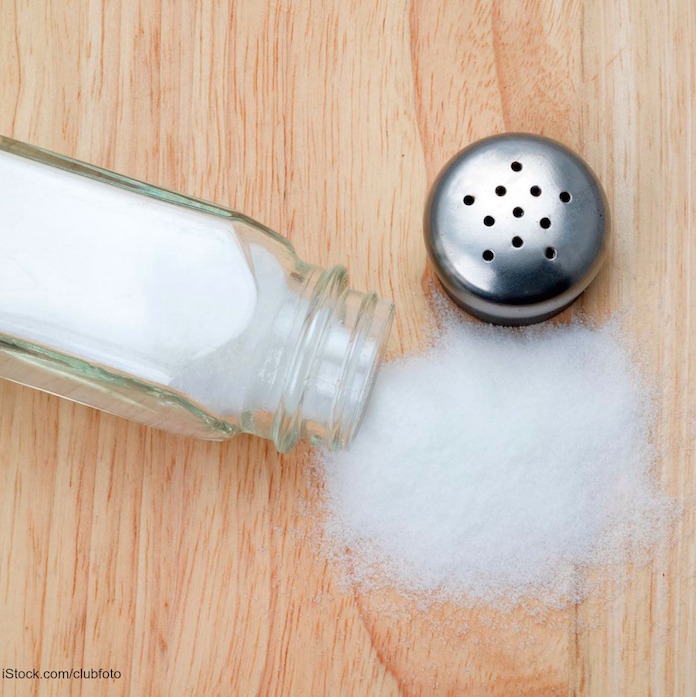The FDA is warning consumers that they may be consuming far more salt than they think. Even if you don’t salt your food at the table or while cooking, you are probably consuming a lot of sodium, especially if you eat prepared or processed foods.

Most of the sodium in the American diet comes from supermarket foods and restaurant meals. So the FDA is working to gradually reduce the amount of sodium that processors add to food. Draft guidance for industry has been released that sets voluntary goals for reducing sodium levels in processed and prepared foods. Note that their guidance is voluntary, which means that processors and restaurants do not have to abide by the levels.
The maximum sodium intake per day for adults should be about 2,300 milligrams, which is the amount in a teaspoon of salt. Most American adults consume 3,400 a day, which puts their health at risk.
Dr. Susan Mayne, director of the FDA’s Center for Food Safety and Applied Nutrition said, “it’s no easy task for consumers to consume the recommended amount of sodium in their diets. We want to help reduce the amount of sodium across the entire food supply by setting reasonable goals. There are a few interventions that could potentially have as great an overall benefit to public health.”
Sodium occurs naturally in many foods, such as celery and milk. And sodium is used to preserve foods, to thicken sauces, and to enhance flavor. But too much sodium can lead to high blood pressure, which is a leading cause of stroke and heart disease.
While 90% of Americans eat more than the recommended daily amount of sodium, kids and adolescents eat too much too. Kids 6 to 10 years old eat about 2,900 mg per day, while teens eat about 3,700. The upper limits for kids are 2,300 for teens, and lower for children; about 2,200 mg per day for ages 9 to 13; 1,900 for kids ages 4 to 8; and 1,500 mg for kids who are one to three years old.
The types of foods that are highest in sodium are cheese, soups, salad dressings, deli meats, pizza, sandwiches, and snacks. But foods that are high in sodium don’t always taste salty. Bread can have one of the highest sodium contents, even though it doesn’t taste salty.
The FDA has released two and 10-year draft targets. The first target reduces sodium intake to 3,000 mg per day. The long term target is to reduce the intake to 2,300 mg per day.
You probably won’t notice small reductions in sodium content of your favorite foods. And over time taste buds will adjust. If changes are made incrementally, you will become accustomed to the taste of foods with less sodium.
The FDA thinks that this strategy could yield annual benefits of $70 billion a year or more in improved health and longevity. High blood pressure kills hundreds of thousands of Americans in a decade.
The FDA is seeking public comment before finalizing these targets. You have until August 31, 2016 to comment on issues 1 through 4 in the draft guidance and until October 31, 2016 to comment on issues 5 through 8.
Mayne added, “we know that many companies have already taken steps on their own to reduce sodium in certain foods, but our food supply is still too high in sodium. People will always have the choice to add salt to their foods. What they don’t have now is the choice to take it out.”




